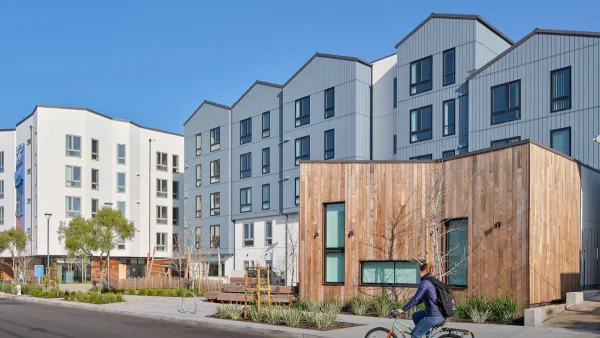An overdependence on offshore suppliers has left the American economy extremely vulnerable to disaster, writes political activist Matt Stoller.
The manufacture of a host of very basic products are concentrated in a few vulnerable places. For example, the Japanese Tsunami caused a global shortage of broadcast-quality videotape. Stroller writes,
"much of the production for critical products and services that make our economy run is constructed by a patchwork global network of suppliers all over the world in unstable regions, over which we have very little control. An accident or political problem in any number of countries may deny us not just iPhones but food, medicine or critical machinery.
The re-engineering of our global supply chain needs to happen-and it will happen, either through good leadership or through collapse. This means that our government and our society needs to reorient our economy toward manufacturing and rededicate our corporations to productive uses."
FULL STORY: How America Could Collapse

Planetizen Federal Action Tracker
A weekly monitor of how Trump’s orders and actions are impacting planners and planning in America.

San Francisco's School District Spent $105M To Build Affordable Housing for Teachers — And That's Just the Beginning
SFUSD joins a growing list of school districts using their land holdings to address housing affordability challenges faced by their own employees.

Can We Please Give Communities the Design They Deserve?
Often an afterthought, graphic design impacts everything from how we navigate a city to how we feel about it. One designer argues: the people deserve better.

The EV “Charging Divide” Plaguing Rural America
With “the deck stacked” against rural areas, will the great electric American road trip ever be a reality?

Judge Halts Brooklyn Bike Lane Removal
Lawyers must prove the city was not acting “arbitrarily, capriciously, and illegally” in ordering the hasty removal.

Engineers Gave America's Roads an Almost Failing Grade — Why Aren't We Fixing Them?
With over a trillion dollars spent on roads that are still falling apart, advocates propose a new “fix it first” framework.
Urban Design for Planners 1: Software Tools
This six-course series explores essential urban design concepts using open source software and equips planners with the tools they need to participate fully in the urban design process.
Planning for Universal Design
Learn the tools for implementing Universal Design in planning regulations.
Borough of Carlisle
Smith Gee Studio
City of Camden Redevelopment Agency
City of Astoria
Transportation Research & Education Center (TREC) at Portland State University
City of Camden Redevelopment Agency
Municipality of Princeton (NJ)


























